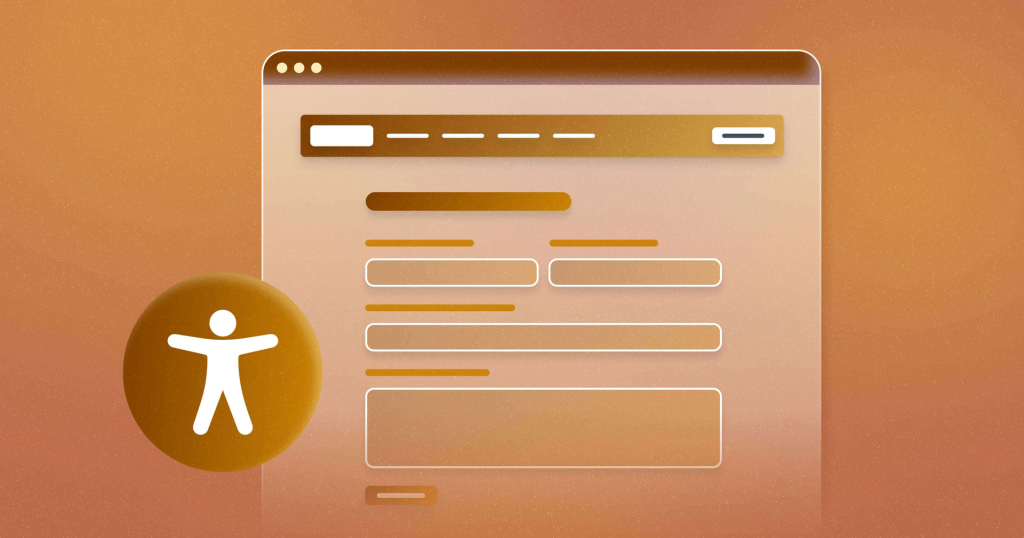Roughly 43% of all websites today use WordPress. That means almost half of the web is built on this platform. Because of that scale, even modest gaps in accessibility expose many businesses to legal risk.
Today, we will see why so many WordPress sites fall short on ADA compliance. We’ll explain the legal stakes and walk you through the steps to take to protect your site.
Why is Accessibility Such a Big Problem?
Even in 2025, accessibility failures remain widespread.
- WebAIM’s 2025 “Million” report found that 94.8% of home pages had at least one detectable WCAG (Web Content Accessibility Guidelines) 2 error.
- The common types of errors are low contrast text (79.1% of pages), missing alt text (55.5%), missing form input labels (48.2%), and empty links (45.4%).
- It also reports an average of 51 distinct accessibility errors per homepage in 2025.
- On the legal side, ADA website accessibility lawsuits are rising sharply. In the first half of 2025 alone, U.S. courts saw 2,014 website accessibility lawsuits, up 37% from the same period in 2024.
- Many reports show a consistent upward trend in complaints. At the end of 2024, there were over 8,800 ADA Title III complaints filed.
These statistics alone tell you this problem is not going away.
Because WordPress is so common, many sites built using WordPress are part of that failing majority. That creates the “43% at risk” narrative, as not 43% of WordPress sites are failing, but because WordPress powers such a large share, many failing sites sit on WordPress.
Why WordPress Sites Face Unique Risks
Why do WordPress sites often fall behind in accessibility? Several reasons:
1. Theme and Plugin Quality
Many free or premium themes and plugins are not built for accessibility. They may:
- Use nonsemantic HTML
- Omit ARIA roles
- Lacks proper keyboard navigation
- Use poor contrast or color choices
Even if the WordPress core is neutral, the surrounding ecosystem often introduces violations.
2. Custom Code and Page Builders
Developers or site owners often add custom elements, JavaScript widgets, or page-builder constructs without checking accessibility. That injects errors.
Also, some popular page builders, like older versions of WPBakery, non-accessible modules, have been cited as having dozens of errors per page on average.
3. Content Practices
Your content team may upload images without alt text. They might embed PDFs or forms that aren’t accessible. They might paste content from Word files with hidden markup issues. These practices block screen readers or keyboard-only navigation.
4. Third-Party Ads and Scripts
Third-party ads often undermine accessibility even on otherwise compliant sites. In a large-scale study, 67% of websites saw increased accessibility violations because of ad scripts.
That means even if you do everything right in your core site, external scripts can undo your work.
What “Legal Risk” Means for Your WordPress Site
You need to treat accessibility as a legal risk and not only a moral or UX risk.
1. Demand Letters and Lawsuits
A user or attorney may send a demand letter claiming your site discriminates against people with disabilities. If ignored, they may sue under ADA Title III (public accommodations). Courts increasingly view websites as “places of public accommodation.”
Settlements usually require you to fix accessibility and pay legal costs. Full trials are rare because defendants often prefer to settle.
2. Courts Require Standards
Courts frequently refer to WCAG 2.0 / 2.1 Level AA as the benchmark for “reasonable” accessibility. If your site fails that, you have a weak defense.
3. Increasing Scope of Litigation
Lawsuits are now targeting more than just websites. Apps, PDFs, videos, and even virtual events come under scrutiny.
4. Widgets Are Not a Safe Harbor
Many businesses use accessibility overlay widgets or plugins and assume that solves the problem. But over 1,000 businesses in 2024 were sued even though they used widgets. Over 25% of all digital accessibility cases involved sites using widgets.
What Steps Can You Take Immediately to Reduce Risk?
You don’t need to fix everything overnight. But you can make big progress quickly by following a structured approach.
Step 1: Conduct an Accessibility Audit
Use a combination of manual automated methods to carry our the accessibility audit:
- Tools: Axe, WAVE, Lighthouse
- Manual testing: keyboard navigation, screen readers like NVDA or VoiceOver.
- Real users: ask users with disabilities to test the website.
Step 2: Address Low-Hanging Fruit First
Start with common, high-impact fixes:
- Add or correct alt text for images.
- Ensure form inputs have proper labels.
- Fix color contrast for text and backgrounds.
- Remove or label empty links/buttons.
- Add skip navigation links, like “Skip to main content”.
These changes resolve many violations flagged by the WebAIM report.
Step 3: Use Accessible Themes & Plugins
Choose themes and plugins that are explicitly accessibility-ready and reviewed. Avoid components that resist keyboard navigation or have dynamic content without accessible handling.
Step 4: Train Your Team & Establish Policies
Make it mandatory to:
- Always add alt text.
- Never embed inaccessible documents.
- Use standard link text.
- Use an accessibility checklist before publishing.
Step 5: Monitor and Re-Test After Updates
Every plugin update or layout change can break accessibility. After any change, re-run your audit for impacted pages.
Step 6: Document Your Efforts
Record your audits, fixes, and policies. If you ever face a legal claim, this documentation helps show you acted responsibly.
These steps cut significant risk fast. Over time, you can deepen remediation.
When You Should Call in Professionals
For complex sites, deep custom code, or mission-critical functions, you’ll want experts. That’s where professional WordPress development services with accessibility experience come in.
What to look for:
- Demonstrated track record in accessibility.
- Ability to test with assistive technologies.
- Give clear deliverables like a remediation plan, testing, or training.
- Maintenance support.
Experienced professionals can fix deeper structural or JavaScript issues that go beyond what you can do in-house. Their cost is often far lower than the legal or reputational costs of litigation.
Final Thoughts
Many WordPress sites sit at risk because the platform powers nearly half the web. Accessibility failures are ubiquitous. Legal claims are rising. But you can act.
Start today: audit your site, make basic fixes, adopt better practices, and consider hiring professionals. Progress is protection. Your users deserve equal access. Your site deserves legal safety.

